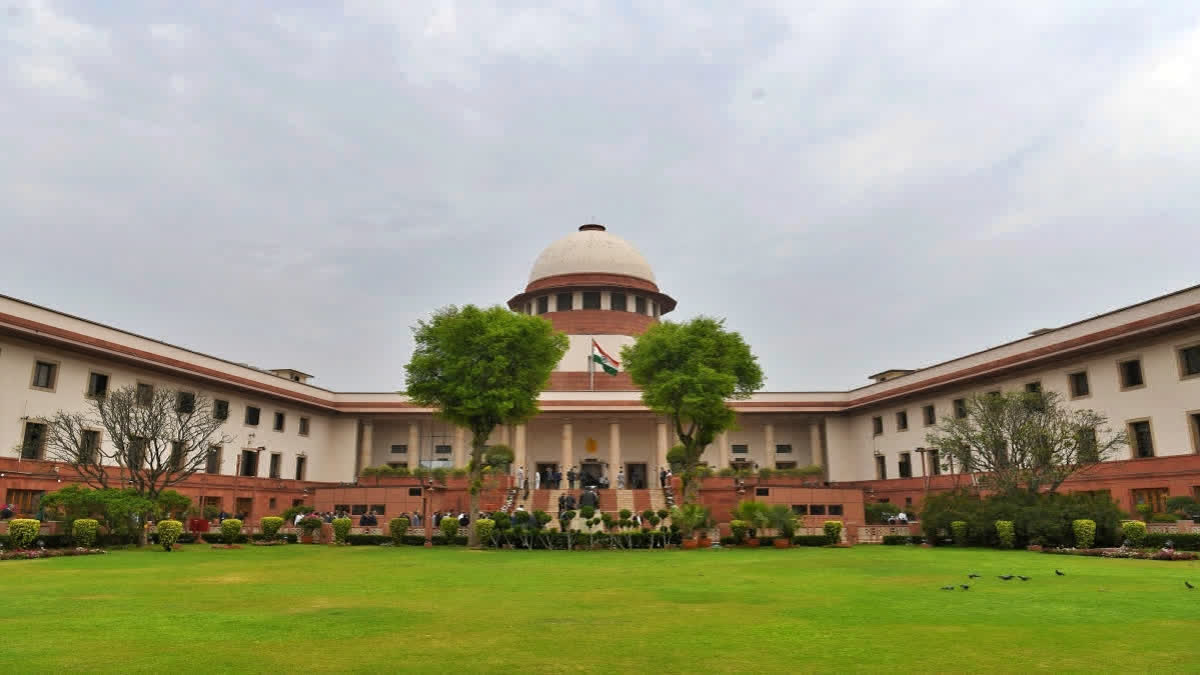New Delhi: The Supreme Court on Monday laid down guidelines against "disparaging" portrayal of persons with disabilities in visual media and films.
A bench led by Chief Justice of India D Y Chandrachud said that terms such as "cripple" and "spastic" have acquired "devalued meanings" in societal perceptions. The bench said the film certification body must invite the opinion of experts before allowing screening. The bench said that visual media should strive to depict diverse realities of persons with disabilities, showcasing not only their challenges but also their successes, talents, and also their contributions to society.
The CJI, who pronounced the judgment on behalf of the bench, said that they should neither be lampooned based on myths nor presented as cripples. The apex court’s judgment came on a plea filed by one Nipun Malhotra, who submitted that the Hindi film 'Aankh Micholi' contained deprecatory references to differently-abled persons.
The apex court said that words cultivate institutional discrimination and terms such as cripple and spastic have come to acquire devalued meanings in societal perceptions about persons with disabilities.
The bench, also comprising Justices J B Pardiwala and Manoj Misra, said that stereotyping differently-abled persons in visual media and films perpetuate discrimination and creators ought to provide an accurate representation of disabilities rather than mocking them.
Justice Pardiwala described the judgment as "path-breaking". The apex court issued a series of guidelines to creators of films and visual media content that their language of discourse should be inclusive rather than alienating.
The top court said terms such as "cripple" and "spastic" have come to acquire devalued meanings in societal perceptions about persons with disabilities. They contribute to the negative self-image and perpetuate discriminatory attitudes and practices in society, said the CJI.
The bench said language that disparages persons with disabilities, marginalises them further and supplements the disabling barriers in their social participation, without the redeeming quality of the overall message of such portrayal must be approached with caution. "Such representation is problematic not because it offends subjective feelings but rather because it impairs the objective societal treatment of the affected groups by society", noted the bench.
The top court said it believes that representation of persons with disabilities must regard the objective social context of their representation and not marginalise persons with disability.
The CJI said language that individualises the impairment and overlooks the disabling social barriers (e.g. terms such as 'afflicted', 'suffering', and 'victim') should be avoided or adequately flagged as contrary to the social model. "Creators must check for accurate representation of a medical condition as much as possible. The misleading portrayal of what a condition such as night blindness entails may perpetuate misinformation about the condition, and entrench stereotypes about persons with such impairments, aggravating the disability," said the CJI.
The bench said average people are unaware of the barriers persons with disabilities face, and visual media must reflect their lived experiences and their portrayal must capture the multitudes of their lived realities, and should not be a uni-dimensional, ableist characterisation.
"They should neither be lampooned based on myths (such as, 'blind people bump into objects in their path') nor presented as 'super cripples' on the other extreme. This stereotype implies that persons with disabilities have extraordinary heroic abilities that merit their dignified treatment," said the bench.
The bench said it must be put to practice in constituting statutory committees and inviting expert opinions for assessing the overall message of films and their impact on the dignity of individuals under the Cinematograph Act and Rules. "Collaboration with disability advocacy groups can provide invaluable insights and guidance on respectful and accurate portrayals, ensuring that content aligns with the lived experiences of persons with disabilities," observed the bench.
The bench held that the legal framework stressed on the prevention of stigmatisation and discrimination, recognising their profound impact on the dignity and identity of persons with disabilities. The bench said media portrayals of persons with disabilities have been historically oppressive and recurrent negative portrayals as illustrated above and frequent use of patronising and offensive language such as "victim", "differently abled", or "unfortunate" to describe individuals continue to perpetuate negative attitudes towards persons with disabilities.
The CJI said the notion that visually impaired persons have enhanced spatial senses may not apply to everyone uniformly and it also implies that those who do not have such enhanced superpowers to compensate for the visual impairment are somehow less than ideal.
The CJI said the medical model treats disability as a personal 'tragedy' which is by definition, incompatible with humour and this understanding is now obsolete under the social model which views disability as a function of social barriers that disable such individuals.



